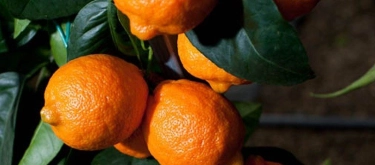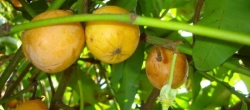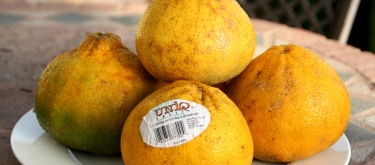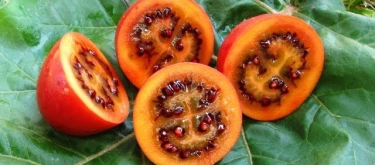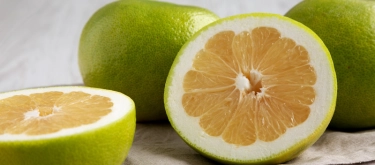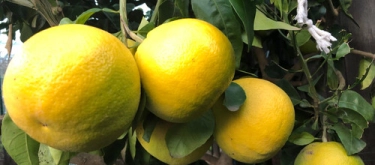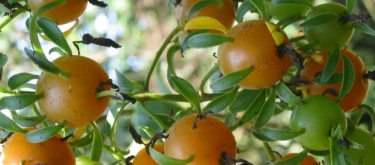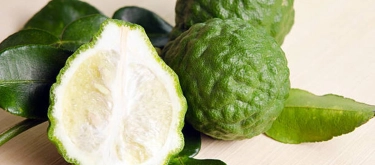Bitter Orange: Taste Profile, Aroma, Benefits and Health Risks
Bitter orange (also known as Seville Orange, Sour Orange, Bigarade; Citrus × aurantium) originates from Southeast Asia but gained prominence through extensive cultivation in the Mediterranean, especially Spain and southern Italy. Esteemed historically for its medicinal and culinary uses, bitter orange has become an essential flavoring in cuisines worldwide, particularly in marmalades, beverages, and fragrant culinary extracts.
Bitter orange contains synephrine, a stimulant that may increase blood pressure and heart rate. Individuals with hypertension, heart conditions, thyroid disorders, or anxiety should avoid consuming large quantities. Pregnant women and nursing mothers are advised to avoid excessive intake due to its stimulant properties. Those allergic to citrus fruits should also exercise caution.
What does Bitter Orange taste like?
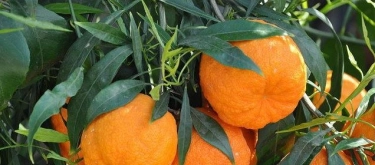
Complete Sensory Description:
Taste
Bitter orange possesses an intensely tart, distinctly bitter flavor with moderate acidity. Initial bright citrus notes quickly transition into lingering bitterness, complemented by subtle aromatic sweetness and herbal undertones.
Aroma
The fruit's aroma is powerfully aromatic, citrusy, and slightly floral, characterized by refreshing notes of orange blossom, bitter zest, and delicate herbal nuances reminiscent of bergamot and lavender.
Texture
The thick, rugged rind is highly aromatic yet bitter. The pulp within is juicy but less succulent compared to sweet oranges, often fibrous and packed with numerous seeds. The inner texture is firm, somewhat tough, and moderately juicy.
Appearance
Bitter oranges typically measure about 6–10 cm in diameter, round or slightly flattened. The thick, deeply textured rind varies from vibrant orange to reddish-orange hues, often irregularly shaped, enclosing bright orange pulp with abundant seeds.
In-depth Flavor Analysis:
The distinctive flavor of bitter orange arises from a combination of bitter compounds, organic acids, essential oils, and aromatic volatile substances:
-
Bitterness Profile: The bitterness primarily derives from flavonoids such as naringin, neohesperidin, and limonoids concentrated in the peel and pulp. These compounds linger on the palate, defining the fruit’s characteristic bitter complexity.
-
Acidic and Sweet Notes: Significant levels of citric acid impart vibrant acidity, balanced slightly by fructose and sucrose sugars. Though moderately sweet, sweetness remains subtle compared to typical oranges, overshadowed by bitterness and acidity.
-
Aromatic Compounds: The potent aroma is mainly due to essential oils containing limonene, linalool, myrcene, and β-pinene. Limonene provides a sharp citrus note, linalool imparts soft floral tones, myrcene adds subtle herbal complexity, and β-pinene contributes resinous depth. Trace amounts of aldehydes like citral lend freshness, accentuating overall aromatic intensity.
-
Environmental Factors Influencing Flavor: Climate and ripeness significantly impact bitterness and aromatic qualities. Warmer, drier Mediterranean climates typically yield fruit with intensified aromas and concentrated bitterness.
Varieties and Culinary Applications:
Primary varieties of bitter orange include:
- Seville Orange: Renowned globally, highly favored for marmalade-making.
- Bouquet de Fleurs: Highly aromatic, cultivated primarily for perfumes and culinary extracts.
- Bergamot Orange: Used primarily for essential oils and flavoring teas.
Culinary applications include:
- Marmalades and Preserves: Classic ingredient for British marmalade, prized for distinctive bitterness.
- Beverages: Integral to flavoring liqueurs (such as Curaçao, Triple Sec), cocktails, bitters, and herbal teas.
- Cooking and Sauces: Widely used in marinades, sauces, and dressings, notably enhancing duck, pork, fish, and Mediterranean dishes.
- Extracts and Zest: Popular as aromatic flavoring in baked goods, desserts, confections, and sauces.
Selection and Storage:
Choose bitter oranges with firm, deeply colored rinds without bruises or excessive softness. Their texture naturally feels rugged. Store at room temperature for up to a week, or refrigerate for prolonged freshness (2–3 weeks). Bitter orange zest and juice freeze well, maintaining flavor and aroma for several months.
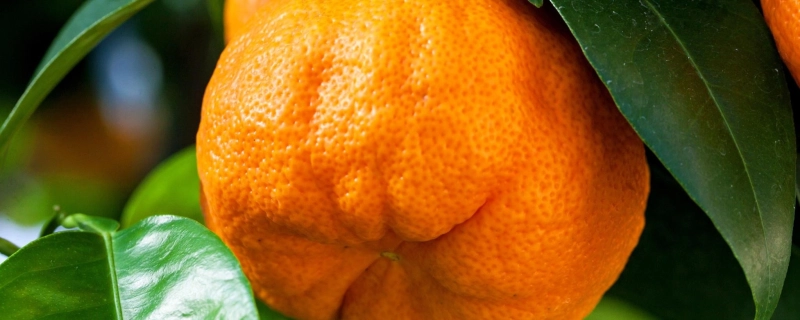
Nutritional Insights:
Bitter oranges are nutritionally rich, particularly in vitamin C, flavonoids, antioxidants, dietary fiber, and minerals like potassium and calcium. Regular, moderate consumption may support immune function, aid digestion, and potentially reduce inflammation. However, caution is advised due to the presence of synephrine, a stimulant that can raise heart rate and blood pressure, especially problematic for individuals with cardiovascular concerns.
Expert Insights & Culinary Tips:
- Flavor Pairings: Bitter orange pairs perfectly with rich meats (duck, pork), seafood, dark chocolate, cinnamon, cloves, and fresh herbs like rosemary or thyme.
- Preparation Recommendations: Due to its intense bitterness, the fruit is rarely eaten fresh. Culinary experts advise using smaller amounts initially, balancing bitterness with sugar or honey.
- Zest Utilization: Bitter orange zest is exceptionally fragrant, ideal for enhancing cakes, pastries, sauces, and savory dishes.
Interesting and Curious Facts:
- Historically, bitter oranges were introduced to Europe by Arab traders, becoming a luxurious and sought-after fruit in medieval Mediterranean cuisine and medicine.
- The aromatic essential oil of bitter orange blossoms (neroli oil) is highly valued in perfumery and aromatherapy, renowned for its calming properties.
- Traditional Chinese medicine has utilized bitter orange peel (Chen Pi) for thousands of years to aid digestion and reduce phlegm.
Harm and Dietary Considerations:
Excessive consumption of bitter orange can pose significant risks due to its stimulant compound synephrine, particularly for individuals with hypertension, cardiovascular disease, anxiety disorders, or thyroid conditions. Pregnant and breastfeeding women are advised against consuming large amounts due to limited safety data and potential stimulant effects. Individuals allergic to citrus should avoid bitter orange entirely.
Religious Dietary Considerations:
Bitter orange is universally permissible and does not have known restrictions within major religious dietary guidelines, including Halal, Kosher, Hindu vegetarianism, and Buddhist dietary practices.
Final Thoughts & Sensory Journey:
Bitter orange provides a distinctive sensory experience marked by vibrant acidity, pronounced bitterness, and intoxicating aromatic complexity. Whether adding depth to culinary dishes or enhancing beverages and confections, bitter orange remains a timeless ingredient, valued equally for its intense flavor and rich historical heritage.
Resources:
- "The Citrus Industry" by Walter Reuther, Herbert J. Webber, and Leon D. Batchelor (University of California Press, 1989)
- "Citrus Fruit: Biology, Technology and Evaluation" edited by Milind Ladaniya (Academic Press, 2008)
- "Handbook of Herbs and Spices" edited by K.V. Peter (Woodhead Publishing, 2012)


